Gutta cavat lapidem, non vi, sed saepe cadendo
[The drop hollows the stone, not by force, but by continuously dropping]
- Ovid, Roman poet 43 BC - AD 17
Wednesday, December 31, 2014
Athens skyline
Here, I've gathered some pictures I've taken of the Athens skyline; some from Mount Lycabettus, which is the highest point in the city and where I'm heading later tonight to watch the fireworks. There's a seriously overpriced restaurant up there, a small chapel and a funicular. The rest are from the Acropolis.
Athens is a big, big city.
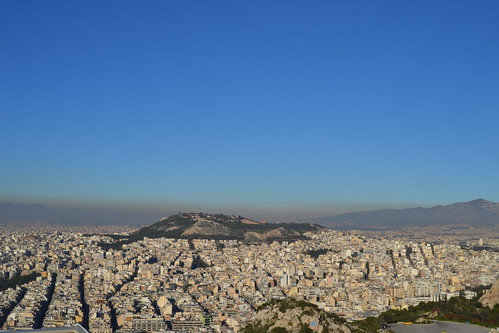
According to official numbers, the urban area (including the port city of Piraeus) has 3-4 million people, but who really knows. Including all the illegals, not to mention the tourists, it may be more like 5 million at any given point.

From Mount Lycabettus, you can see the ocean.
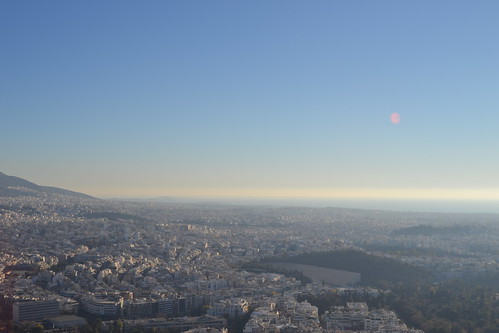
I was up there yesterday, and there was snow on the surrounding hillsides.
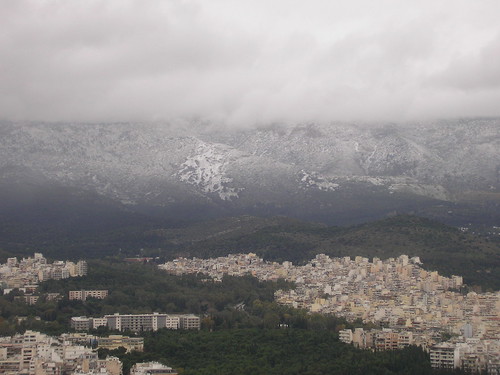
One has clear views of the Acropolis, whence most of the fireworks tonight will be deployed.
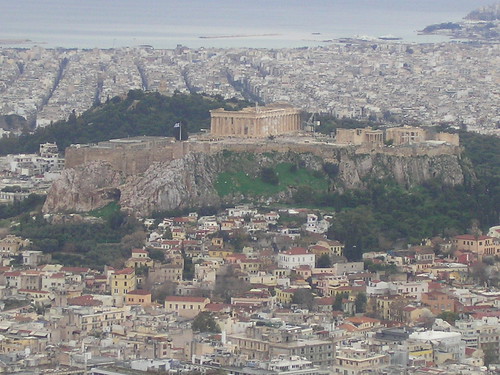
I'm not sure if the fog is rolling down the hill or climbing up it, but it looks cool.
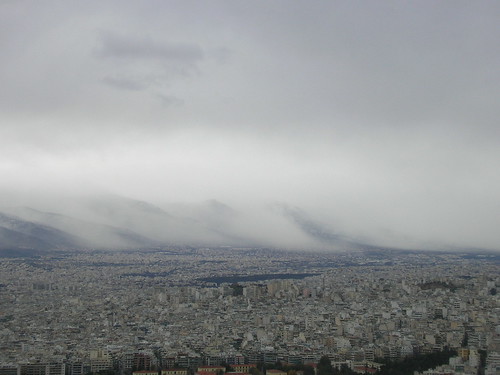
There are three marble blocks up at Lycabettos with information on what you're actually seeing from the top. They've all been destroyed by vandalism and idiocy.
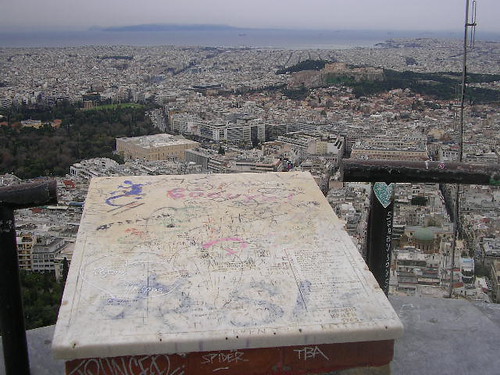
These are both from the Acropolis area:
Mount Lycabettus.
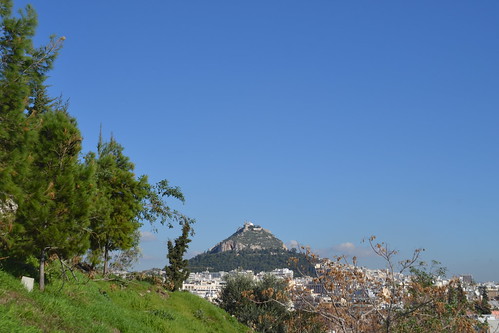
The ocean.
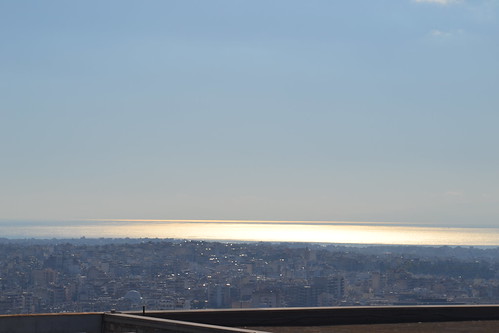
Athens is a big, big city.

According to official numbers, the urban area (including the port city of Piraeus) has 3-4 million people, but who really knows. Including all the illegals, not to mention the tourists, it may be more like 5 million at any given point.

From Mount Lycabettus, you can see the ocean.

I was up there yesterday, and there was snow on the surrounding hillsides.

One has clear views of the Acropolis, whence most of the fireworks tonight will be deployed.

I'm not sure if the fog is rolling down the hill or climbing up it, but it looks cool.

There are three marble blocks up at Lycabettos with information on what you're actually seeing from the top. They've all been destroyed by vandalism and idiocy.

These are both from the Acropolis area:
Mount Lycabettus.

The ocean.

Tuesday, December 30, 2014
Quote of the Day
Lead us not into temptation. Just tell us where it is; we'll find it.
- Sam Levenson
- Sam Levenson
Monday, December 29, 2014
Quote of the Day
Too bad all the people who know how to run this country are busy driving cabs and cutting hair.
- George Burns
- George Burns
Sunday, December 28, 2014
Quote of the Day
I don't like to commit myself about heaven and hell you see, I have friends in both places.
- Mark Twain
- Mark Twain
The National History Museum
Saturday I resumed my museal duties and visited the National History Museum. It was a nice way to spend about an hour, and I learned a bit about the Greek fight for independence and even more about the inner workings of the Ottoman Empire, of which Greece was a part for several hundred years. The museum starts with the fall of Constantinople/Bysants/Istanbul to the Turks in 1453 and ends with WW2.
The naval Battle of Lepanto in 1571, where the heathen Turks were stopped once and for all in their western expansion.

Lord Byron, who fought for Greece in words and in person and died there, probably from a combination of a severe cold and the idiotic practice of bloodletting, which was still a cure-all at the time of his death in 1824.
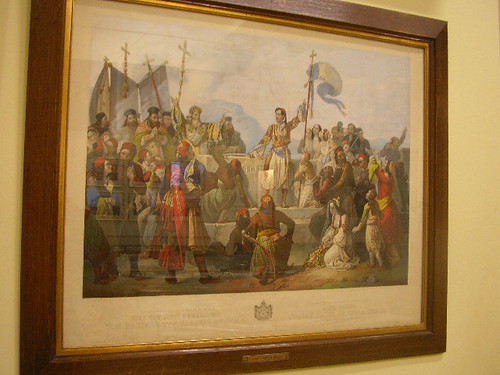
Some objects which had belonged to Byron.
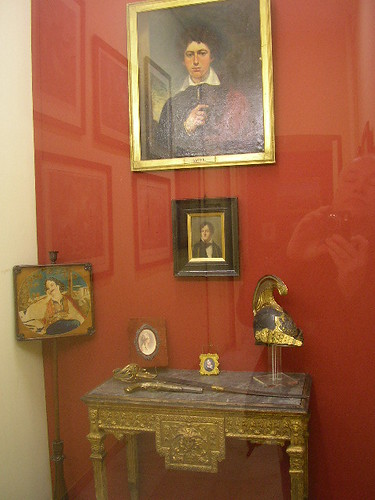
I wonder how many battles and wars the Greek might have won iffin their soldiers weren't dressed in drag.

I rest my case.
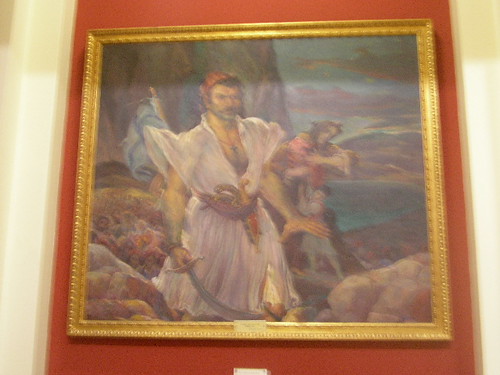
The naval Battle of Lepanto in 1571, where the heathen Turks were stopped once and for all in their western expansion.

Lord Byron, who fought for Greece in words and in person and died there, probably from a combination of a severe cold and the idiotic practice of bloodletting, which was still a cure-all at the time of his death in 1824.

Some objects which had belonged to Byron.

I wonder how many battles and wars the Greek might have won iffin their soldiers weren't dressed in drag.

I rest my case.

Saturday, December 27, 2014
Friday, December 26, 2014
Quote of the Day
Every reform, however necessary, will by weak minds be carried to an excess, that itself will need reforming.
- Samuel Taylor Coleridge
- Samuel Taylor Coleridge
Thursday, December 25, 2014
Quote of the Day
Christianity is the most perverted system that ever shone on man.
- Thomas Jefferson
- Thomas Jefferson
National Archaeological Museum III
This last section contains miscellaneous pics of this and that. Enjoy. Then go visit the National Archaeological Museum in Athens.
The museum from outside. Little did I know what hidden gems waited within.
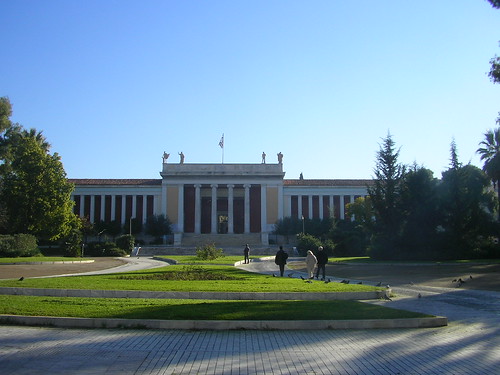
This is exactly the type of museum I like, with clearcut information on the walls and stuff to look at in the rooms.
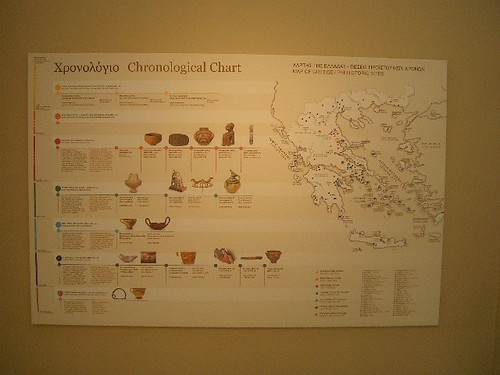
Demeter and Persephone (Ceres and Proserpina in Latin) were pre-Olympian godesses, worshipped perhaps for milenniae by agricultural societies long before they were incorporated into the pantheon we think of as Greek mythology today.
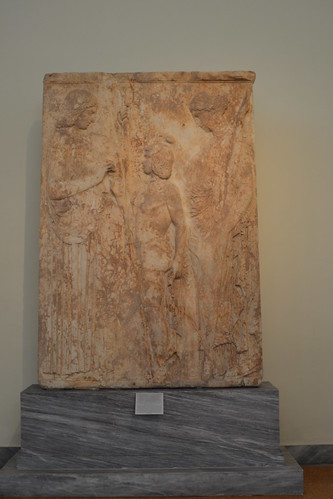
The patron godess of Athens, Athene. In Latin, her name is Minerva.

Yours truly in front of one of only FIVE bronze statues left in Greece. The reason there aren't any more, is that when the Romans took over, they melted them down and used them for other purposes. The usually made copies first though, which is why Italy is full of copies of Greek art. This one survived because the ship it was on sank.
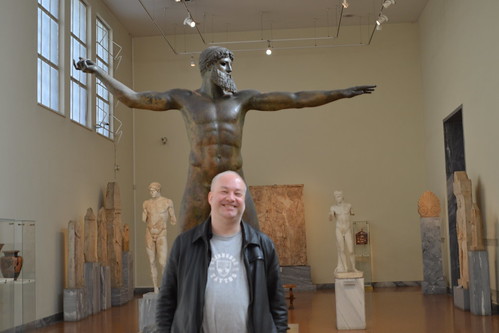
The rich aristocracy of Athens would spend quite a lot of time in the gym. In between workouts, they would amuse themselves with animal fights and... hockey?
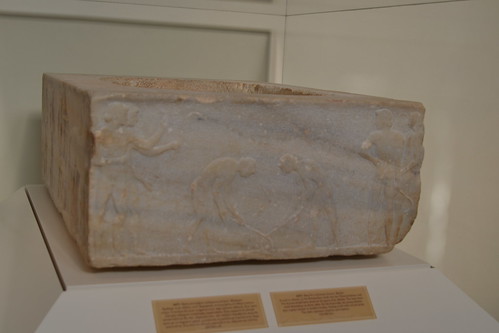
Perhas you've seen this picture before? Or maybe you've spent most of your life hiding under a rock? They've got the original in Athens.

Trinkets and stuff.
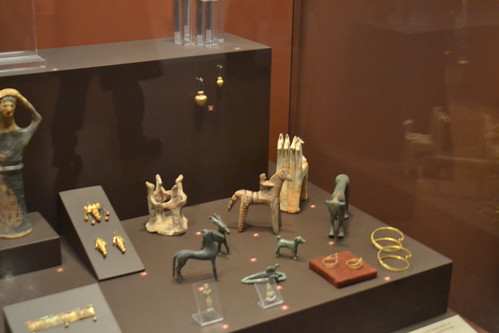
In the small, but exquisite Egyptian section, they had this pre-dynastic hippo.
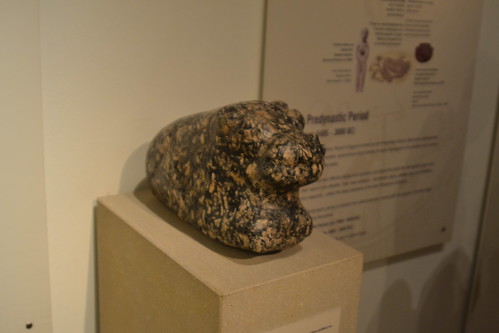
This as an Arabic horse with an Ethiopian boy on top. As Alexander the Great introduced ever new cultures to the Greek, they started making images of them.

This guy looks seriously kinky.

The museum from outside. Little did I know what hidden gems waited within.

This is exactly the type of museum I like, with clearcut information on the walls and stuff to look at in the rooms.

Demeter and Persephone (Ceres and Proserpina in Latin) were pre-Olympian godesses, worshipped perhaps for milenniae by agricultural societies long before they were incorporated into the pantheon we think of as Greek mythology today.

The patron godess of Athens, Athene. In Latin, her name is Minerva.

Yours truly in front of one of only FIVE bronze statues left in Greece. The reason there aren't any more, is that when the Romans took over, they melted them down and used them for other purposes. The usually made copies first though, which is why Italy is full of copies of Greek art. This one survived because the ship it was on sank.

The rich aristocracy of Athens would spend quite a lot of time in the gym. In between workouts, they would amuse themselves with animal fights and... hockey?

Perhas you've seen this picture before? Or maybe you've spent most of your life hiding under a rock? They've got the original in Athens.

Trinkets and stuff.

In the small, but exquisite Egyptian section, they had this pre-dynastic hippo.

This as an Arabic horse with an Ethiopian boy on top. As Alexander the Great introduced ever new cultures to the Greek, they started making images of them.

This guy looks seriously kinky.

National Museum of Archaeology II
This section will contain pictures of some of the umpteen grave steles and statues they have on display. The ancient Greeks were big, very big, on graves and the afterlife and the museum contained several rooms full of stuff related to it. I won't even hazard a guess as to how much loot they have in storage.
A funeral statue of a young woman. She is holding a flower and the inscription at the bottom says "My complaint is that I died before my wedding".

Upon closer inspection the flower looks very much like a small butt plug.
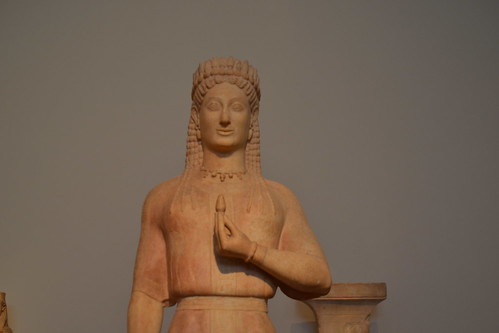
A funeral statue for a young man. The inscription reads "My complaint is that the God of War took me with him". Notice how many of the statues have one leg in front of the other. That's a trick to let them balance on a relatively small space of ground, and another thing the Greeks learned from the Egyptians.

An older Greek vase illustrating a funeral. Notice how the stick people are actually depicted tearing their hear in grief, a Greek custom to this very day. As with so many cultures, they had a tradition of a wake, the purpose of which was to ensure that the dead was actually dead and not waking up to announce that he's feeling better.
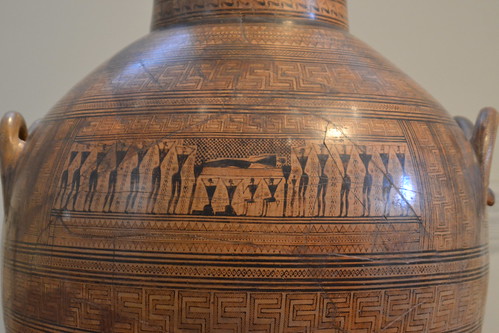
The Archaic period was a relatively peaceful time for the Greek world, hence all their statues - even the Sphinx - are smiling. At least that's what I was told.
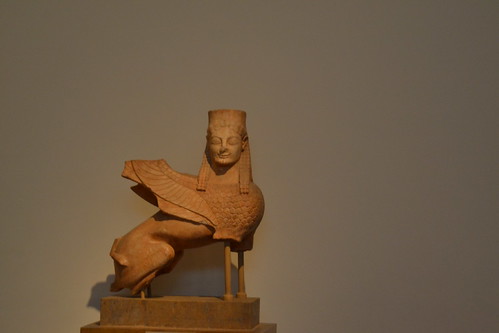
One of the more moving steles was this one, of a woman sitting in mourning - or perhaps contemplation - while her young child is reaching out for her. The grave belonged to a woman; maybe it was a young mother, maybe she died in childbirth.
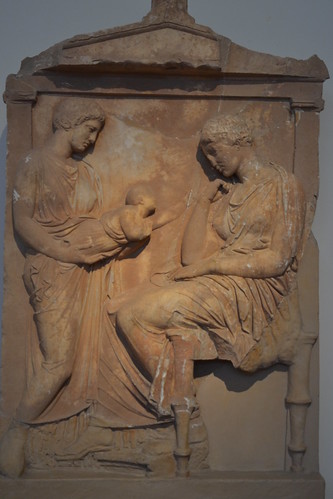
A funeral statue of a young woman. She is holding a flower and the inscription at the bottom says "My complaint is that I died before my wedding".

Upon closer inspection the flower looks very much like a small butt plug.

A funeral statue for a young man. The inscription reads "My complaint is that the God of War took me with him". Notice how many of the statues have one leg in front of the other. That's a trick to let them balance on a relatively small space of ground, and another thing the Greeks learned from the Egyptians.

An older Greek vase illustrating a funeral. Notice how the stick people are actually depicted tearing their hear in grief, a Greek custom to this very day. As with so many cultures, they had a tradition of a wake, the purpose of which was to ensure that the dead was actually dead and not waking up to announce that he's feeling better.

The Archaic period was a relatively peaceful time for the Greek world, hence all their statues - even the Sphinx - are smiling. At least that's what I was told.

One of the more moving steles was this one, of a woman sitting in mourning - or perhaps contemplation - while her young child is reaching out for her. The grave belonged to a woman; maybe it was a young mother, maybe she died in childbirth.

The National Museum for Archaeology I
I spent over three wonderful hours at the National Museum for Archaeology on Wednesday, and I can highly recommend it; it is possibly the best museum on antiquity I have ever visited. I had made a brief venture there on Tuesday, but as the memory card of my big camera was sitting pretty in my PC and all the batteries (including the four back-ups) for the small camera decided to die simultaneously, I thought it best to go back to the hotel and just sulk. So the very next day I returned, both cameras charged to the max and memory cards present.
I had just checked in my bag when I saw a sign for English guided tours and a lady sitting behing a desk. I went over to enquire and she told me that two other ladies were interested in joining a tour if I could wait five minutes. She went off, but came back without the ladies, who were no longer interested. She offered to give me a "very special private tour" for just 30 Euros (as opposed to the regular 50), so I agreed. I'm glad I did; I even opted for an additional tour of an extra room for €10 more. It was a great to have a knowledgeable person with 20 years of experience to show me the highlights, and I walked back later to look at some stuff in detail and get more pics.
I'm going to divide the material from the museum into three posts, as I took a shitload of pics while there; let me just reiterate that the National Museum for Archaeology is a great place and that a guided tour is very much recommended indeed.
This section consists of pictures from the early Hellenistic civilizations. This is the so-called "Mask of Agamemnon", a death mask found by a Kraut archaeologist in 1876. Recent carbon dating shows the mummy that was below it to be more than 400 years older than Mr. Agamemnon, but for reasons of publicity they still call it the Agamemnon mask. The scoundrels.
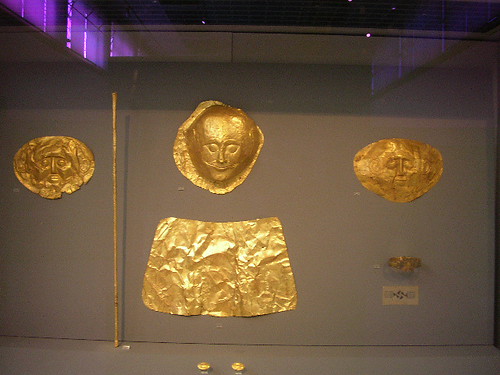
That's pure gold, btw.
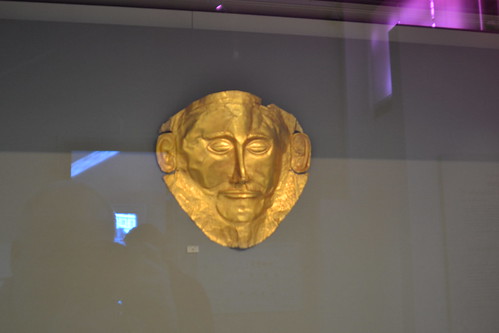
Some old fertility symbol. Originally, the statue is thought to have had a big boner.

The swastika - a fertility symbol found in many places around the world.

The earth mother Gaia - an ancient Greek deity and the object of vast amounts of idiotic nonsense from present day dirty, smelly hippies and eco-fascists.
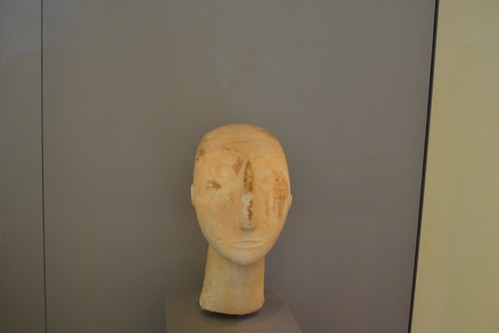
Greek civilization in many ways started with the one in Crete; the Minoans. They'd been to Egypt, were impressed with what they had seen, and one of the many things they copied was the ritual slaughter of bulls.
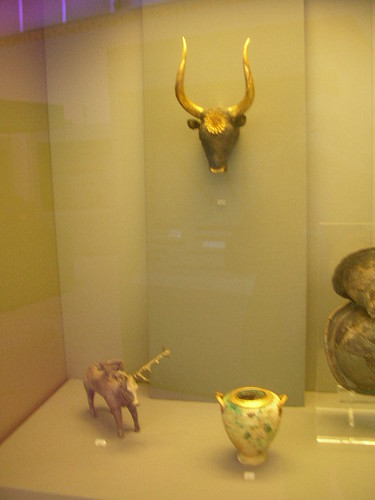
Another thing about the Minoans - it was the fashion among the ladies of the court to walk around with their breasts on display. Never say you don't learn anything from this blog!
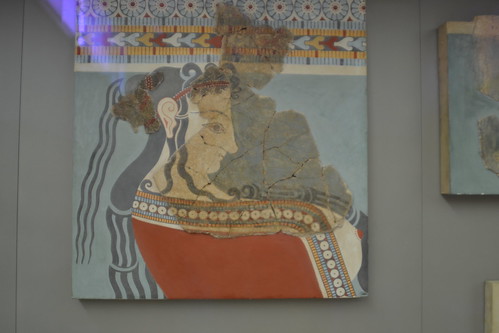
The ancient ones would make helmets out of boars' tusks. These were an early form of armour and it could take upwards of 140 animals to make one helmet. If you encountered someone wearing one of these, you could be pretty sure he was a fierce warrior.
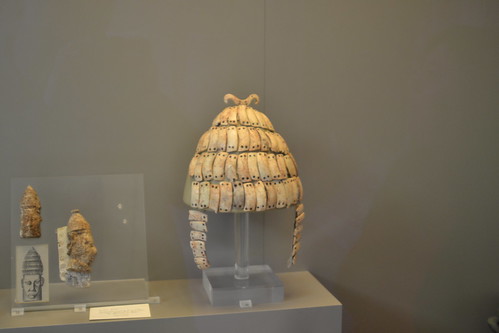
I had just checked in my bag when I saw a sign for English guided tours and a lady sitting behing a desk. I went over to enquire and she told me that two other ladies were interested in joining a tour if I could wait five minutes. She went off, but came back without the ladies, who were no longer interested. She offered to give me a "very special private tour" for just 30 Euros (as opposed to the regular 50), so I agreed. I'm glad I did; I even opted for an additional tour of an extra room for €10 more. It was a great to have a knowledgeable person with 20 years of experience to show me the highlights, and I walked back later to look at some stuff in detail and get more pics.
I'm going to divide the material from the museum into three posts, as I took a shitload of pics while there; let me just reiterate that the National Museum for Archaeology is a great place and that a guided tour is very much recommended indeed.
This section consists of pictures from the early Hellenistic civilizations. This is the so-called "Mask of Agamemnon", a death mask found by a Kraut archaeologist in 1876. Recent carbon dating shows the mummy that was below it to be more than 400 years older than Mr. Agamemnon, but for reasons of publicity they still call it the Agamemnon mask. The scoundrels.

That's pure gold, btw.

Some old fertility symbol. Originally, the statue is thought to have had a big boner.

The swastika - a fertility symbol found in many places around the world.

The earth mother Gaia - an ancient Greek deity and the object of vast amounts of idiotic nonsense from present day dirty, smelly hippies and eco-fascists.

Greek civilization in many ways started with the one in Crete; the Minoans. They'd been to Egypt, were impressed with what they had seen, and one of the many things they copied was the ritual slaughter of bulls.

Another thing about the Minoans - it was the fashion among the ladies of the court to walk around with their breasts on display. Never say you don't learn anything from this blog!

The ancient ones would make helmets out of boars' tusks. These were an early form of armour and it could take upwards of 140 animals to make one helmet. If you encountered someone wearing one of these, you could be pretty sure he was a fierce warrior.

Wednesday, December 24, 2014
Parliament
I walked from the Olympieion back to my hotel, and it was a bitterly cold experience. Most of the route was in the shade and there was a chilly wind blowing. Brrrr. Along the way I passed the Greek Parliament, where they have a completely ludicrous changing of the guards. I arrived towards the end of it, but managed to take some pics of a part of the ritual I have called "the humiliation of the new recruit".
Parliament.
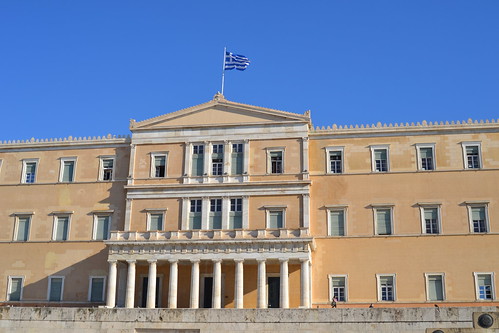
The square on the other side of the street. It's calledSmegma Syntagma Square.

Checking the weight of the testicles...
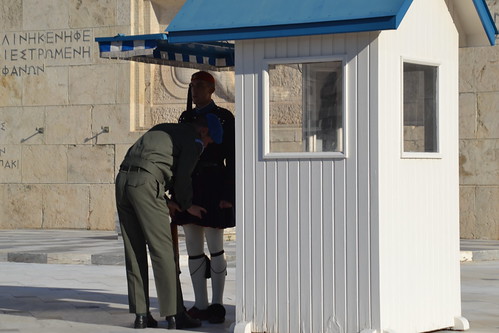
Unnecessary fiddling with pieces of clothing...

You put your right foot in...

Possibly, he got a stretch at this point.
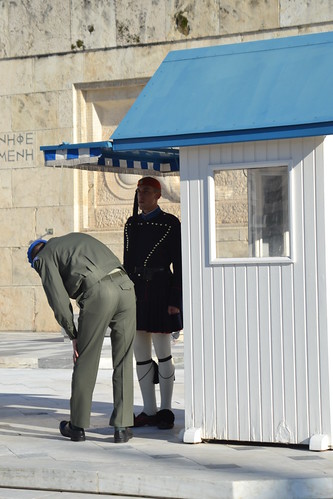
Parliament.

The square on the other side of the street. It's called

Checking the weight of the testicles...

Unnecessary fiddling with pieces of clothing...

You put your right foot in...

Possibly, he got a stretch at this point.

Olympieion
Monday I went to the Olympieion area, which used to be outside the city proper, but at the time of the Roman emperor Hadrian was incorporated into Athens. The main attraction is the vast Temple of Zeus, which used to be the largest in all of Greece when Hadrian completed it in AD 132. There are also a bunch of other buildings here; everything from private houses to Roman baths to various temples, but most of them are in a separate area south of the Zeus temple and are currently off limits due to seasonal closings.
The Arch of Hadrian is placed just outside the outdoors museum area. It bears two inscriptions; on the other side it reads "this is Athens, the ancient city of Theseus", while the side facing the camera reads "this is the city of Hadrian, and not of Theseus".
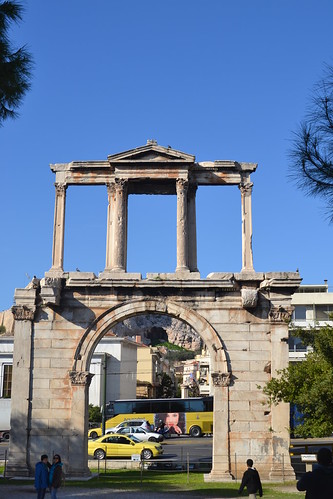
The Temple of Zeus from different angles.
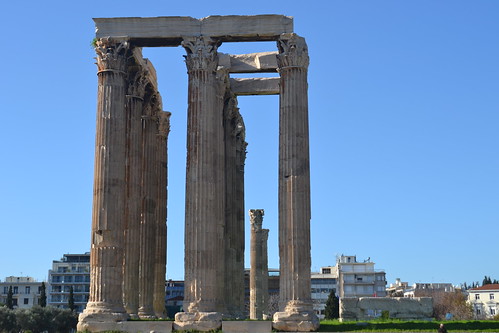
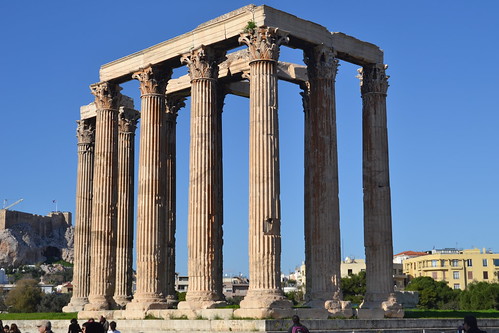

Ruins of a private house.
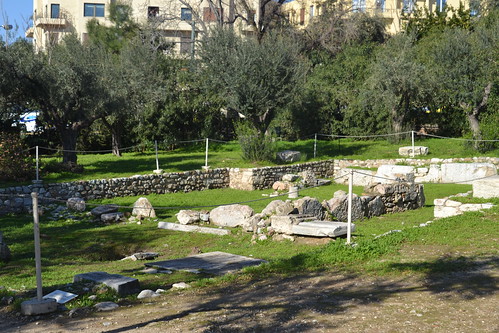
Ruins of a Roman bath.
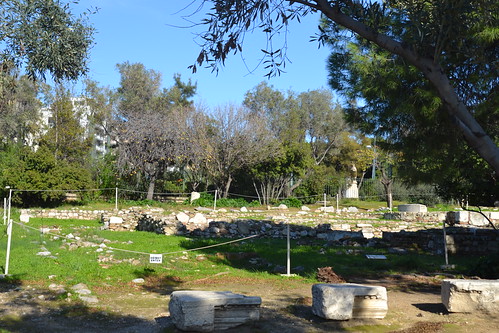
The lower area was off limits for now.
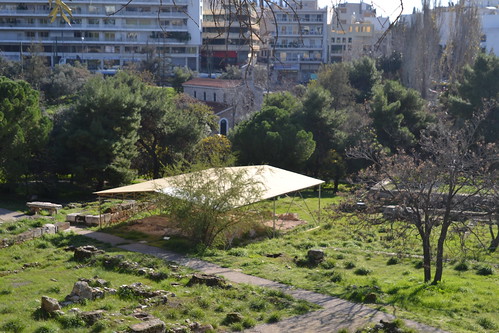
The Arch of Hadrian is placed just outside the outdoors museum area. It bears two inscriptions; on the other side it reads "this is Athens, the ancient city of Theseus", while the side facing the camera reads "this is the city of Hadrian, and not of Theseus".

The Temple of Zeus from different angles.



Ruins of a private house.

Ruins of a Roman bath.

The lower area was off limits for now.

Subscribe to:
Comments (Atom)
